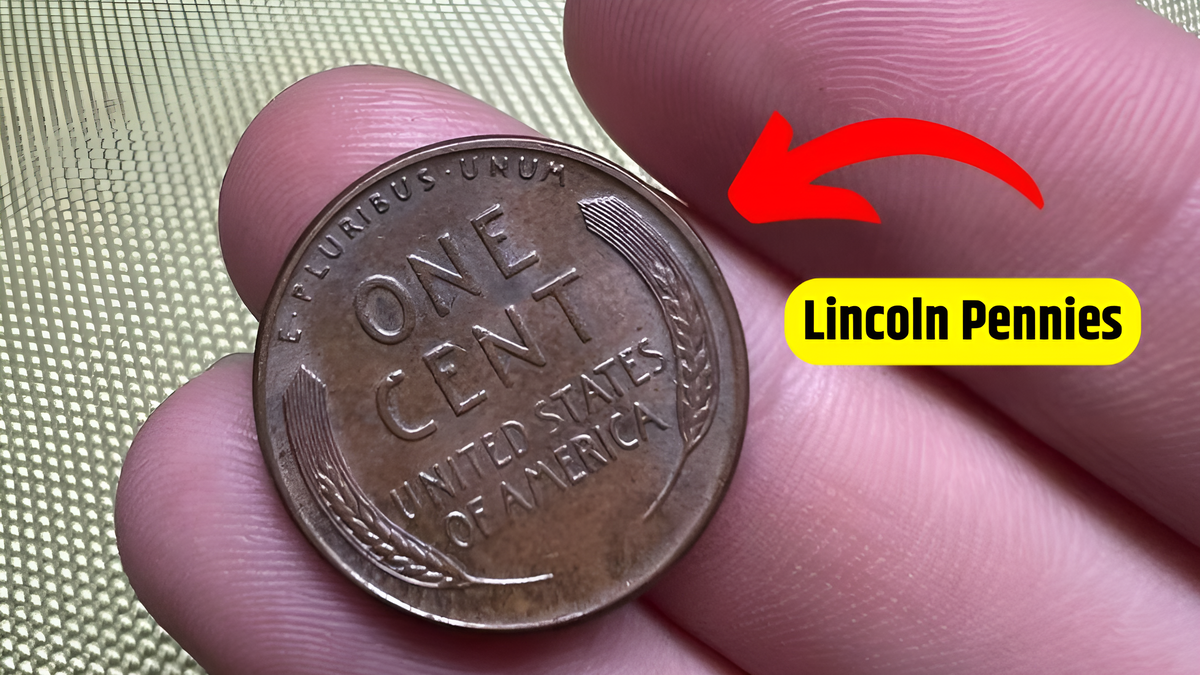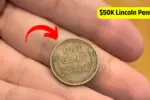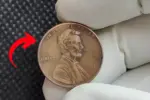Have you ever taken a moment to look closely at the pennies in your pocket or the change clinking in your jar? Those small coins, often dismissed or forgotten, could hold a treasure trove of history and value. Lincoln pennies, which have been in circulation since 1909, are not just simple currency they’re a rich blend of artistry, history, and numismatic marvels. Some of these pennies have unique stories behind them, making them rare, sought after, and worth much more than their face value.
Here, we’ll explore five rare Lincoln pennies that may be hiding in your change, patiently waiting to be discovered by a keen eye. Whether you’re an experienced coin collector or a curious enthusiast, these pennies could be the hidden treasures you’ve been searching for.
1. The 1909-S VDB Penny: The First of Its Kind
The 1909-S VDB penny is not just a coin it’s a cornerstone of American coinage history. This penny marked the introduction of the Lincoln cent, designed to honor the legacy of Abraham Lincoln on the centennial of his birth. Created by sculptor Victor David Brenner, the design featured Lincoln’s portrait on the obverse, a significant departure from the usual imagery on U.S. coins.
What makes the 1909-S VDB penny so special? Firstly, its limited mintage only 484,000 coins were produced at the San Francisco Mint. Secondly, the controversy surrounding Brenner’s initials, “VDB,” placed prominently on the reverse, led to their removal from subsequent coins. This combination of factors turned the 1909-S VDB penny into a collector’s dream.
How to Identify It:
- Look for the “S” mintmark below the date on the obverse.
- Check the reverse near the bottom rim for the “VDB” initials.
In good condition, this coin can fetch anywhere from $700 to over $3,000. Imagine finding one of these in your change it’s like holding a piece of history in your hand.
2. The 1943 Bronze Penny: A Wartime Rarity
The 1943 bronze penny is the stuff of legends in the coin-collecting world. During World War II, copper was a critical resource for ammunition production, so the U.S. Mint switched to using zinc-coated steel for pennies. However, a few 1943 pennies were accidentally struck on leftover bronze planchets from 1942, creating one of the rarest error coins in existence.
These bronze pennies are incredibly valuable, with some specimens selling for over $100,000 at auction. Their scarcity, combined with the story of their accidental creation, makes them highly desirable.
How to Verify Its Authenticity:
- A 1943 bronze penny will have a coppery appearance, unlike the silver-gray steel pennies.
- It will not be magnetic, as bronze does not attract magnets.
Finding a 1943 bronze penny could be life-changing. It’s a tangible reminder of the resourcefulness and sacrifices of wartime America.
3. The 1955 Doubled Die Penny: A Striking Error
The 1955 doubled die penny is one of the most famous and visually striking error coins in U.S. history. A minting error caused the doubling of the date and lettering on the obverse, creating a dramatic effect that’s easily noticeable even without magnification. Coins with errors like this are rare because most are caught and corrected during production.
The 1955 doubled die penny is particularly popular among collectors due to its bold and unmistakable doubling. In fact, its discovery helped spark a broader interest in error coins.
Key Features to Look For:
- Clear doubling on the date (“1955”) and inscriptions like “LIBERTY” and “IN GOD WE TRUST.”
- Found only on pennies minted in Philadelphia (no mintmark).
Depending on the condition, these coins can range in value from $800 to over $25,000. Even a well-worn example can still be worth a significant sum.
4. The 1992 Close AM Penny: Subtle Yet Significant
At first glance, the 1992 Close AM penny might seem like an ordinary coin, but its significance lies in a tiny detail on the reverse. In this rare variety, the letters “A” and “M” in “AMERICA” are spaced closely together, nearly touching. This error occurred when a proof die, meant for special collector coins, was mistakenly used to strike regular circulation pennies.
The 1992 Close AM penny is a fascinating example of how small details can create big value. While only a few of these coins have been discovered, they are highly sought after by collectors.
How to Spot It:
- Use a magnifying glass to inspect the letters “A” and “M” in “AMERICA” on the reverse.
- If the letters are nearly touching, you may have a Close AM penny.
These coins can fetch anywhere from $1,000 to $20,000, depending on their condition. It’s proof that sometimes, the smallest details make the biggest difference.
5. The 1972 Doubled Die Penny: A Collector’s Delight
The 1972 doubled die penny is another spectacular error coin that captures the imagination of collectors. Like the 1955 doubled die penny, it features noticeable doubling on the obverse. This error affects the date, the word “LIBERTY,” and the motto “IN GOD WE TRUST,” making it a striking and desirable find.
The 1972 doubled die penny is particularly interesting because multiple die varieties exist, some with more pronounced doubling than others. This variety adds an extra layer of intrigue for collectors.
What to Look For:
- Doubling on the obverse inscriptions, especially the date and lettering.
- Best examined under magnification for clarity.
In terms of value, these pennies can range from $300 to over $1,000, depending on the doubling’s visibility and the coin’s condition.
How to Start Your Hunt for Rare Pennies
Finding rare Lincoln pennies requires patience, knowledge, and a sharp eye. Start by gathering your loose change or going through coin rolls from the bank. Invest in a good magnifying glass or coin loupe to examine the details closely. Pay attention to mintmarks, dates, and unusual features.
If you think you’ve found a rare penny, consider having it authenticated by a professional coin grading service. Authentication not only confirms the coin’s authenticity but also provides a grade that can significantly impact its value.
Final Thoughts: More Than Just a Coin
Rare Lincoln pennies are more than just currency they are pieces of history, art, and human ingenuity. Each penny tells a story, whether it’s about wartime sacrifices, printing errors, or the evolution of coin design. Discovering one of these rare pennies in your change is not only thrilling but also a reminder of the rich tapestry of stories that everyday objects can hold.
So, the next time you get change at the grocery store or dig through your coin jar, take a closer look. You never know one of these rare Lincoln pennies might be waiting for you, a small but priceless piece of history hidden in plain sight. Happy hunting!
FAQs
What makes a Lincoln penny rare
Unique features like minting errors, low mintage, or historical significance make some Lincoln pennies rare
How can I check if my penny is valuable
Look for unusual details like doubling, mintmarks, or unique lettering and use a magnifying glass for closer inspection
Where can I sell a rare Lincoln penny
You can sell through coin dealers, auctions, or online marketplaces like eBay or Heritage Auctions
Is it worth getting a penny authenticated
Yes, professional grading services can confirm authenticity and increase its resale value
Can I still find rare pennies in circulation
Absolutely Rare pennies can still show up in pocket change or coin rolls from banks.



